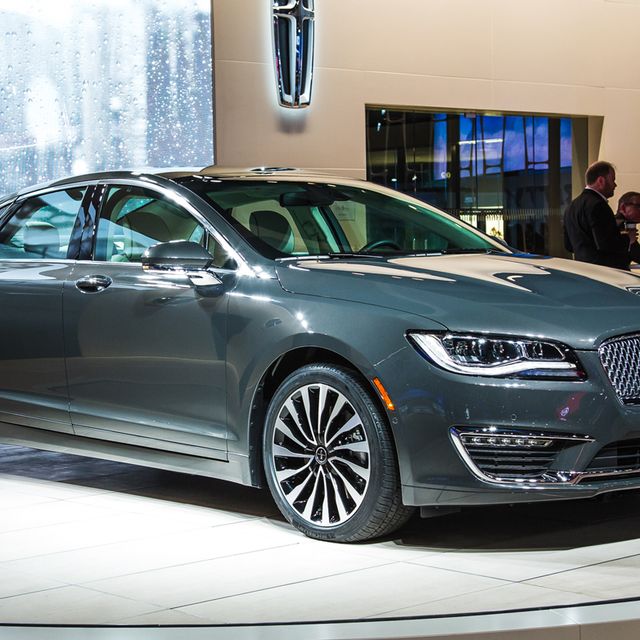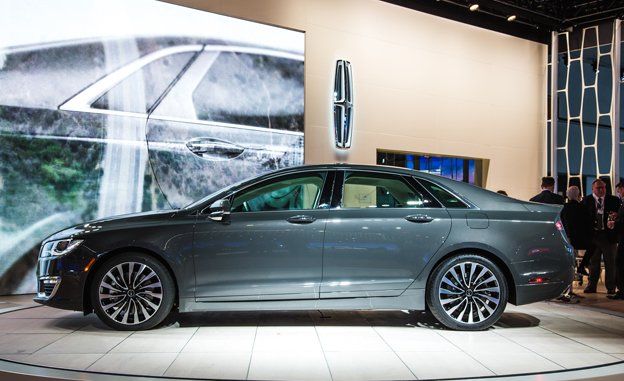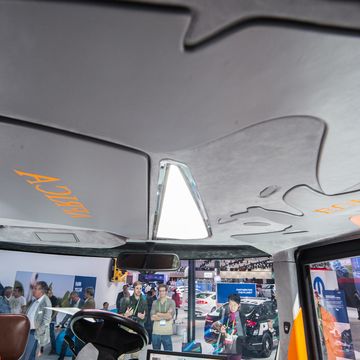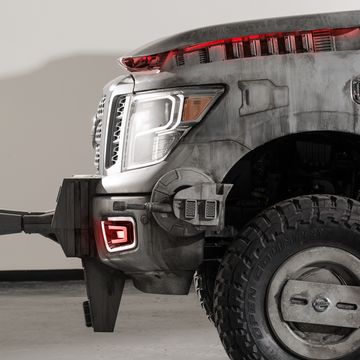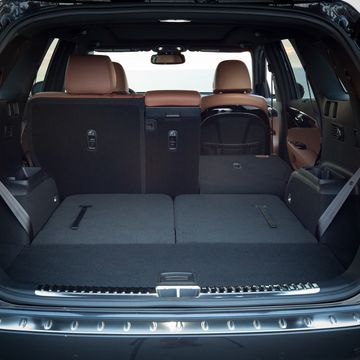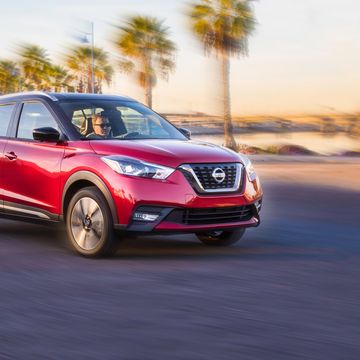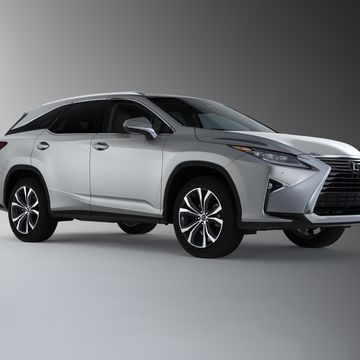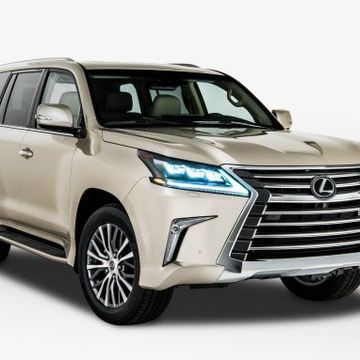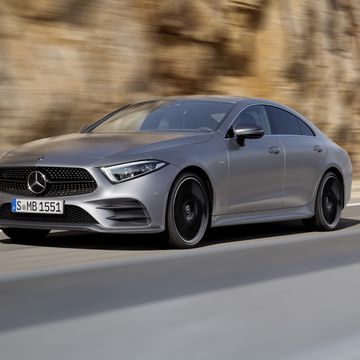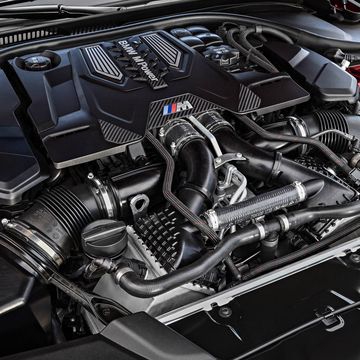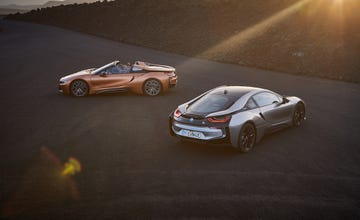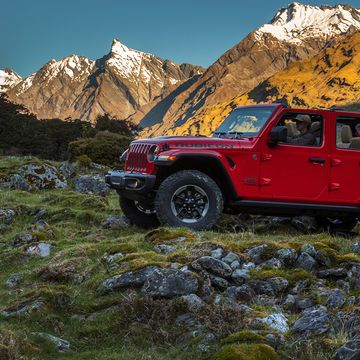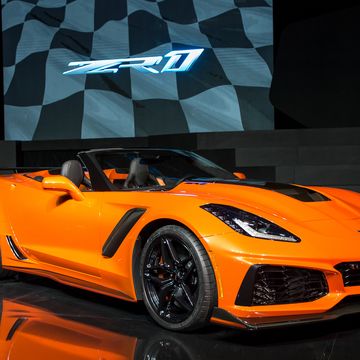Lincoln’s slow return to building genuine luxury cars might finally be picking up speed. While the Continental concept laid out the strategy at the New York auto show, the MKZ debuting at the Los Angeles auto show is the initial play. When it goes on sale in the summer of 2016, the 2017 Lincoln MKZ will be the first car on the road to feature the brand’s fresh design language and a new, high-output engine.
With the updated MKZ, Lincoln hopes to put some distance between its vehicles and the Ford models built on the same platforms. At the same time, it’s marching in the opposite direction of the sport-focused German luxury marques, crosstown rival Cadillac, and even Lexus with its quiet-luxury philosophy. Still, the MKZ’s available 400-hp engine gives us hope that the company might find a way to prioritize quietness and comfort without being utterly dull.
The Luxury of Power
The MKZ serves as the host for a new twin-turbocharged 3.0-liter V-6 that is, at least for now, exclusive to the Lincoln brand. When paired with all-wheel drive and fueled with 93 octane, the direct-injected engine makes 400 horsepower and 400 lb-ft of torque. Front-wheel-drive V-6 models will be limited to 350 horsepower while still producing the full amount of torque. We expect this engine to proliferate throughout the Lincoln range—the Continental concept was hypothetically powered by an engine with the same basic specs—but executives wouldn’t guarantee that it will never show up in a Ford. Then again, is it Lincoln’s fault if, say, the Mustang team cooks up something wicked with this twin-turbo V-6?
To animate the MKZ’s handling, an optional Driver’s package adds torque-vectoring capability to the all-wheel-drive system with hardware borrowed from the rambunctious Ford Focus RS. Supplied by GKN, the torque-vectoring rear differential directs more thrust to the outside rear wheel in corners, creating a yaw moment that helps rotate the car. The Driver’s package also includes adaptive dampers and multi-contour seats with an almost obnoxious amount of adjustability, along with a bevy of superficial enhancements such as a dark-finish grille, carbon-fiber trim throughout the interior, aluminum pedal covers, and properly pretentious “ebony” brake calipers.
While the 3.0-liter V-6 replaces the outgoing MKZ’s normally aspirated 3.7-liter V-6, lesser MKZs soldier on with carry-over engines. The base engine, a turbocharged 2.0-liter four-cylinder, creeps up five horsepower to 245 and can again be paired with either front- or all-wheel drive. The hybrid powertrain combines a naturally aspirated 2.0-liter four-cylinder with a two-motor CVT and remains a strictly front-wheel-drive affair. Lincoln executives wouldn’t confirm whether they will continue to sell the base engine and the hybrid with the same starting price for the 2017 model, but they proudly noted that strategy has elevated the hybrid to 30 percent of all MKZ sales while poaching customers from import brands.
Interestingly, Lincoln is backing away from the EcoBoost name both in its marketing and in the badging on the car. The turbocharged gas engines will instead be branded as 3.0T and 2.0T on the trunklid. Marketing execs say they’re making the change because luxury buyers aren’t interested in any “Eco” aspect of these engines, but we suspect the real intent is to obfuscate the connection between Lincoln cars and Ford engines.
Looks Designed To Be Deceiving
The MKZ still shares its CD4 platform with the Ford Fusion, among other Blue Oval mid-size vehicles, but Lincoln hopes it can distinguish itself from its affordably priced brethren with a new, unique look. Most prominently, the unloved split-wing grille has been traded for a single-frame grille first seen on the Continental concept. It sets the tone for a simple, handsome face, even if it’s not exactly original or imposing. However, the MKZ becomes less attractive as your eyes travel rearward and you’re reminded that this is merely a midcycle facelift, not an all-new car. The graceful, sloping nose is at odds with the heavy visual weight of the high trunklid, the thick C-pillar, and the straight chamfered shoulders of the rear fenders that carry over from the current car. Someone at Lincoln must have had similar thoughts, because the company failed to distribute any photos taken from behind the car.
Knobs and buttons are the highlight of the modest interior update. To go along with the new Sync 3 interface, a spread of physical controls for the audio and climate systems replace the fussy touch-sensitive sliders and buttons in the outgoing car. New Lincoln-specific wiper and turn-signal stalks mean fewer pieces will be pulled out of the Ford parts bin.
The updated MKZ doesn’t add new tech so much as it updates what’s already offered to catch up with the competition. The adaptive cruise control will now slow the car to a stop and reaccelerate to the set speed when the road ahead is clear. (The current car only decelerates to 12 mph before handing responsibility back to the driver.) The forward-collision-warning system now detects pedestrians and applies the brakes if it predicts a crash is imminent. The self-parking feature now recognizes perpendicular spaces as well as parallel spots and can extract the vehicle from the parked position when it’s time to leave.
The First Test, But Not The Real Test
As the first vehicle to wear the brand’s new look, the 2017 Lincoln MKZ marks the first concerted effort to figuratively and literally remake the brand’s image. The true test, however, will come when the product cycle allows engineers and designers to rethink a Lincoln model from the ground up. For now, the MKZ gives us hope that Lincoln can carve out a space as a proper luxury brand.

Eric Tingwall holds degrees in mechanical engineering and journalism, a combination he pursued with the dream of working at Car and Driver. While living his dream, he has cut car parts in half, driven into a stationary dummy car at 50 mph, lapped Virginia International Raceway in the hottest performance cars, and explained the physics behind the wacky, waving, inflatable, flailing-arm tube man.
